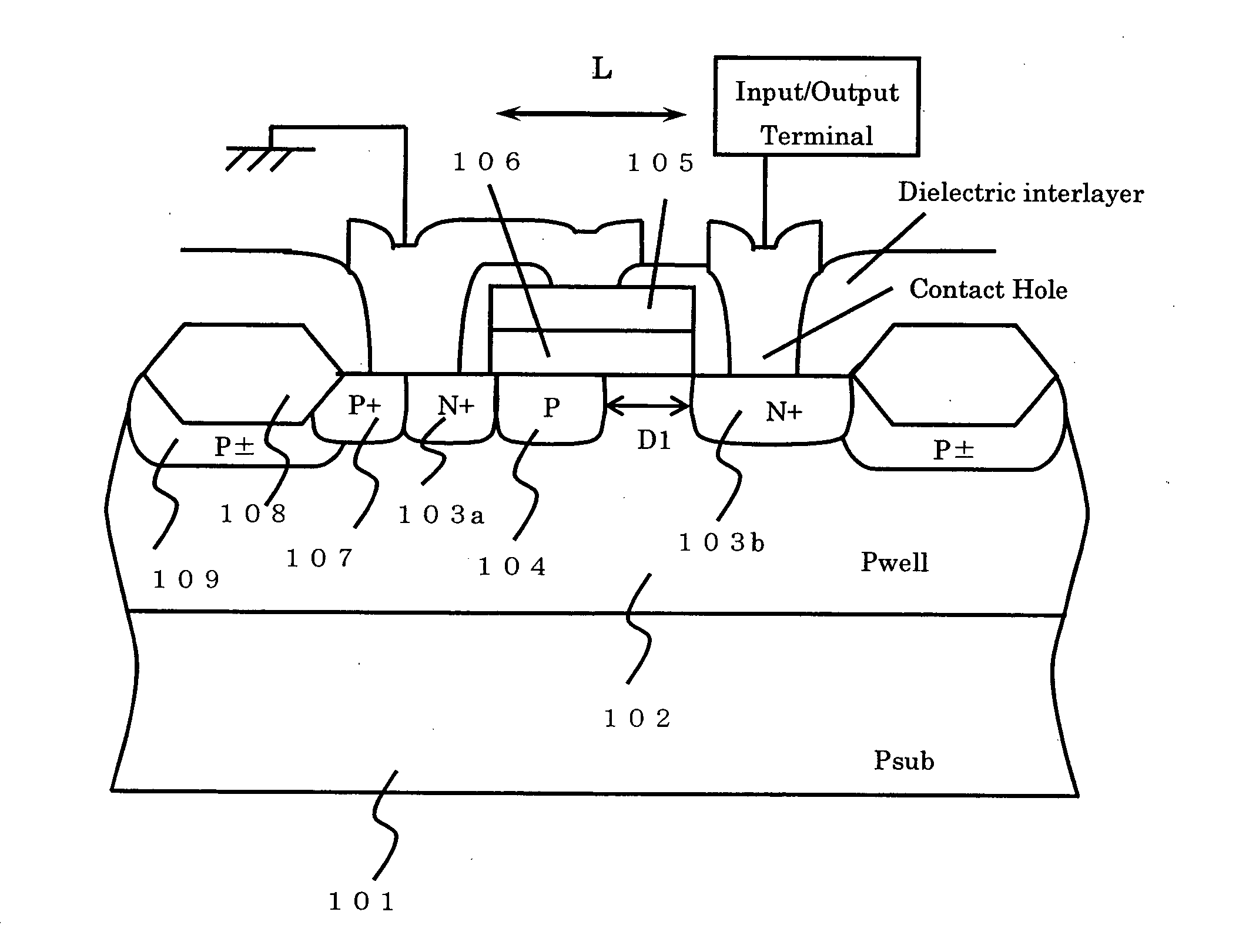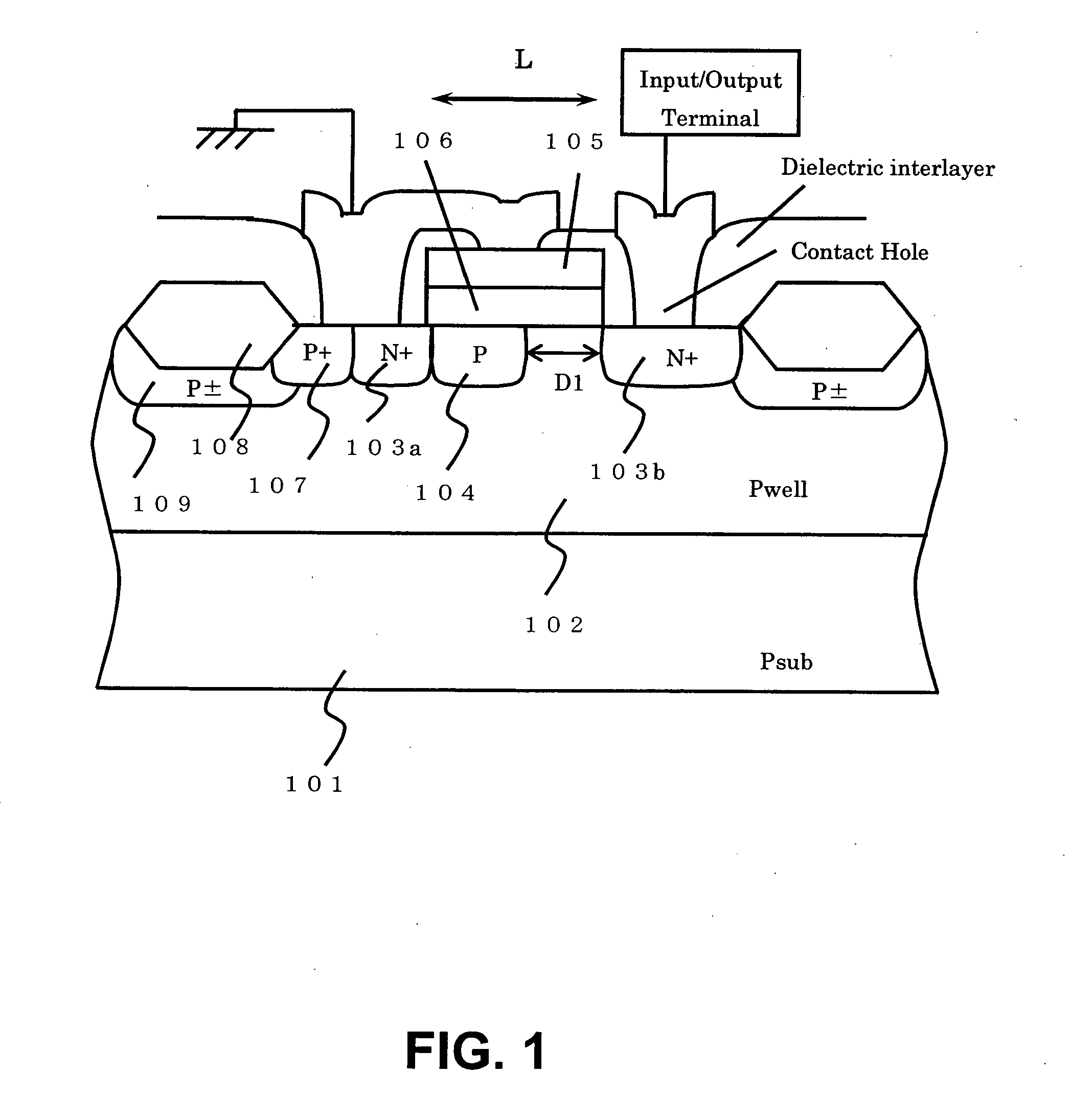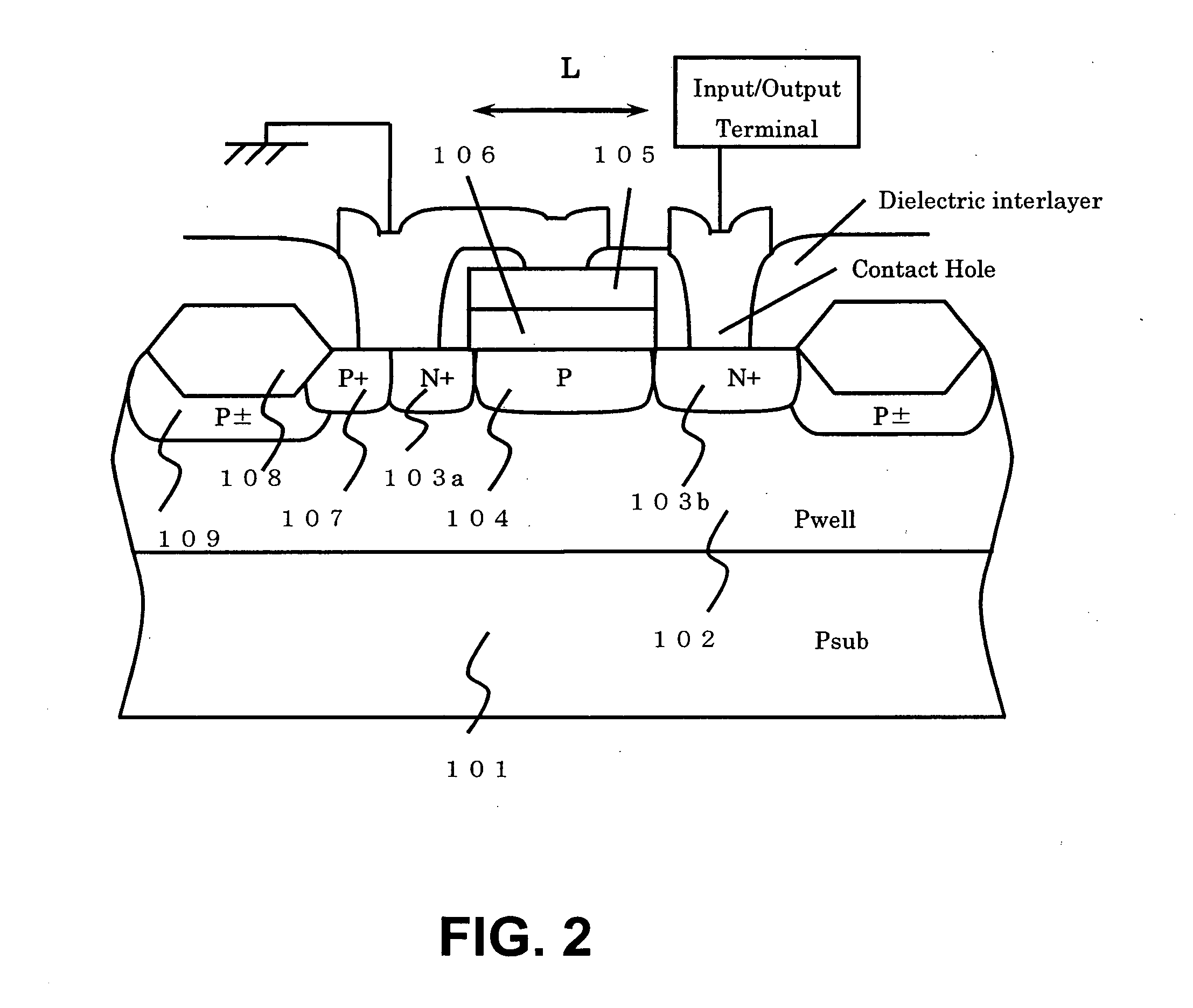Semiconductor Device
a semiconductor device and silicon technology, applied in the direction of semiconductor devices, electrical devices, transistors, etc., can solve the problems of cmos semiconductor device damage, voltage reaching the gate oxide film breakdown before the surface breakdown, etc., and achieve the effect of easy setting a holding
- Summary
- Abstract
- Description
- Claims
- Application Information
AI Technical Summary
Benefits of technology
Problems solved by technology
Method used
Image
Examples
first embodiment
[0014]FIG. 1 is a schematic sectional diagram of an NMOS transistor having a conventional drain structure of a semiconductor device according to a first embodiment of the present invention.
[0015]The NMOS transistor includes a P-type well region 102 formed on a P-type silicon semiconductor substrate 101, a gate oxide film 106 and a polysilicon gate electrode 105 which are formed on the P-type well region 102, a P-type diffusion layer 104 having a high concentration which is formed to contact with the source region locally between an N-type source diffusion layer 103a and an N-type drain diffusion layer 103b, which are formed on a surface of a silicon substrate at both ends of the gate electrode and have a high concentration, and a P-type diffusion layer 107 which is provided so as to take a potential of the P-type well region 102, and has a high concentration. N-type drain diffusion layer 103b is connected to an input / output terminal through wiring, and the N-type source diffusion la...
second embodiment
[0020]FIG. 2 is a schematic sectional diagram of an NMOS transistor having a conventional drain structure of a semiconductor device according to a second embodiment of the, present invention.
[0021]As shown in FIG. 2, a P-type diffusion layer may be formed on an entire area provided immediately below a gate between N-type source and drain diffusion layers.
PUM
 Login to View More
Login to View More Abstract
Description
Claims
Application Information
 Login to View More
Login to View More - R&D
- Intellectual Property
- Life Sciences
- Materials
- Tech Scout
- Unparalleled Data Quality
- Higher Quality Content
- 60% Fewer Hallucinations
Browse by: Latest US Patents, China's latest patents, Technical Efficacy Thesaurus, Application Domain, Technology Topic, Popular Technical Reports.
© 2025 PatSnap. All rights reserved.Legal|Privacy policy|Modern Slavery Act Transparency Statement|Sitemap|About US| Contact US: help@patsnap.com



